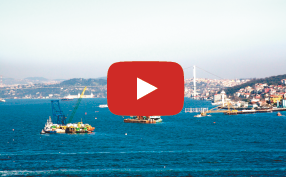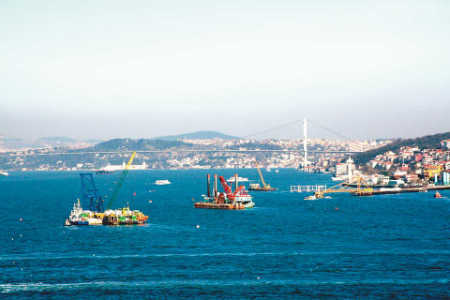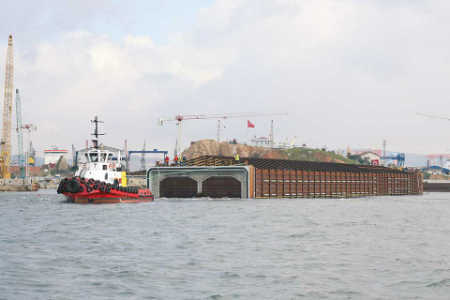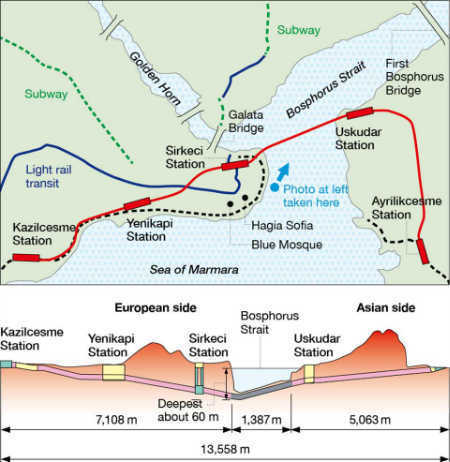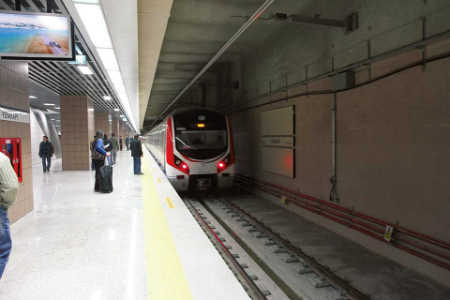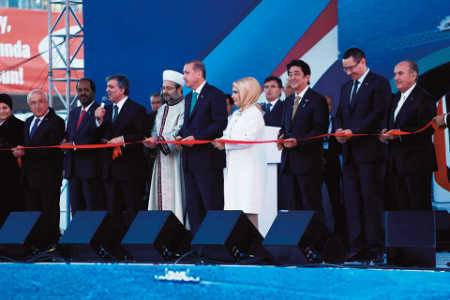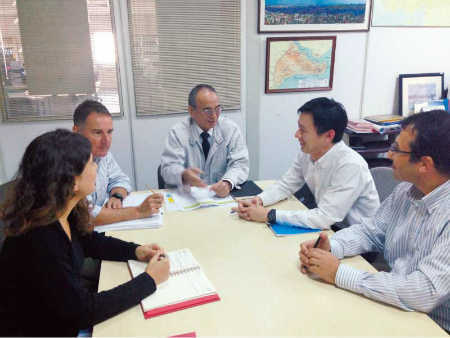Istanbul is separated into an Asian side and a European side by the Bosphorus Strait, a waterway that extends a distance of about 30 kilometers (about 19 miles) from north to south, with a width ranging from 800 to 3,700 meters (about 0.5 to 2.3 miles). The two sides were connected by ferries and by two bridges, including a suspension bridge constructed with support from Japan, but chronic traffic congestion and automobile exhaust emissions had become serious problems requiring major action.
To ameliorate the situation, the Turkish government decided on a project to construct a railway tunnel under the strait. The idea of such a link was an old one, and blueprints were drawn up back in 1860, during the days of the Ottoman Empire. Work finally started on the realization of this dream, and from 1999 the Japanese government provided loans of up to JPY 196.2 billion (about USD 1.64 billion) to support the project. Japan’s Taisei Corporation joined a Turkish company in a joint venture to undertake the construction.
Work on the tunnel, extending a total distance of 13.56 km (about 8.4 miles), began in August 2004. The underwater portion of 1,387 m (about 0.86 miles) was constructed using the immersed tunnel method; 11 large precast concrete tunnel elements were sunk to the seabed and connected. For the portion under land, the tunnel was excavated using the Tunnel Boring Machine (TBM) and New Austrian Tunnelling (NATM) construction methods. Taisei had used the immersed tunnel method in previous projects, such as tunnel construction work for the Port of Tokyo and Metropolitan Expressway, and it had built up a high level of technical capability. But the Bosphorus presented a highly challenging environment for underwater construction, with depths extending to 60 m (about 200 feet) and some of the world’s fastest tidal flows, with water moving in opposite directions at the surface and the seabed; in addition it is heavily trafficked by large ships and ferries. These conditions posed many challenges.
Taisei’s Marmaray (Bosphorus Strait subway) Project Director Tetsuro Matsukubo reports that it took two years to complete the measurements and analysis required to determine how the complex currents would affect the undersea work. Also, in the course of excavation under land, work was delayed by the discovery of many historical remains in the old sections of Istanbul, some dating back to Roman times. Another consideration was that Turkey is an earthquake-prone country. This made it necessary to take special care in designing the tunnel so that it could withstand quakes of magnitudes up to 7.5.
In order to overcome all these challenges, the project brought together the prime technology and knowledge for tunnel construction. The final stage required the undersea and land portions to be connected under the Bosphorus, a global first. The docking was successful, and rail services under the Bosphorus commenced in October 2013, the 90th anniversary of Turkey’s foundation. The trip across the strait, a 30-minute ferry ride, was reduced to a four-minute subway ride, and the cross-strait line has become a well-established part of the transportation system for Istanbul residents.
Matsukubo has been living in Istanbul for 11 years, from the start of construction through to the completion of the work. As he thinks back over the extraordinarily difficult project, he suggests that the key to its success was the solidarity between the Turkish and Japanese people who pooled their strength in pursuit of a common objective. Thanks to their joint efforts, the Turkish people were able to realize a 150-year-old dream and the Japanese to accomplish a great feat in tunnel technology.
Tunnel construction barges floating in the Bosphorus, with the First Bosphorus Bridge in the background.
The cross-strait subway line now carries some 150,000 passengers a day. Renovation work is underway on an existing railway line to be connected to the tunnel; when this is completed the line is expected to serve some 1 million passengers a day.
Prime Minister Shinzo Abe (third from right) participates in the tape-cutting ceremony marking the inauguration of the cross-strait subway line in October 2013, along with Turkey’s Prime Minister (now President) Recep Tayyip Erdogan (fifth from left). (© JICA)
